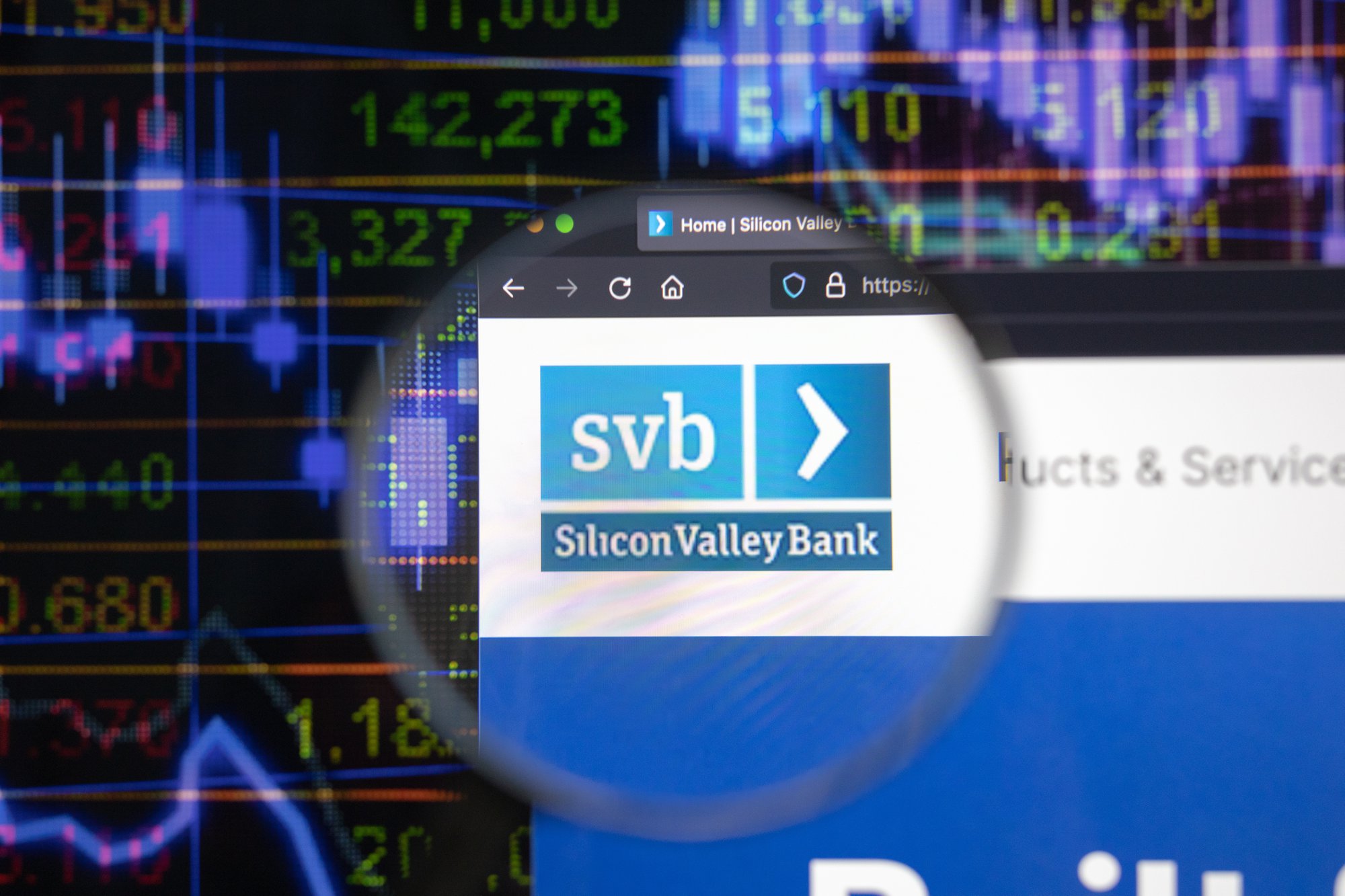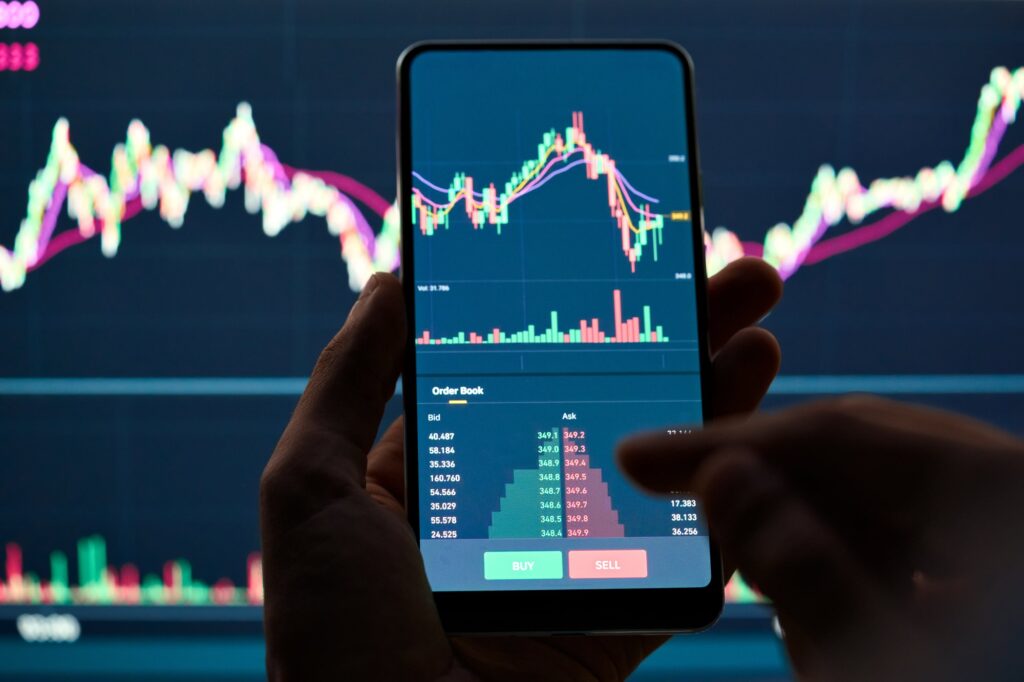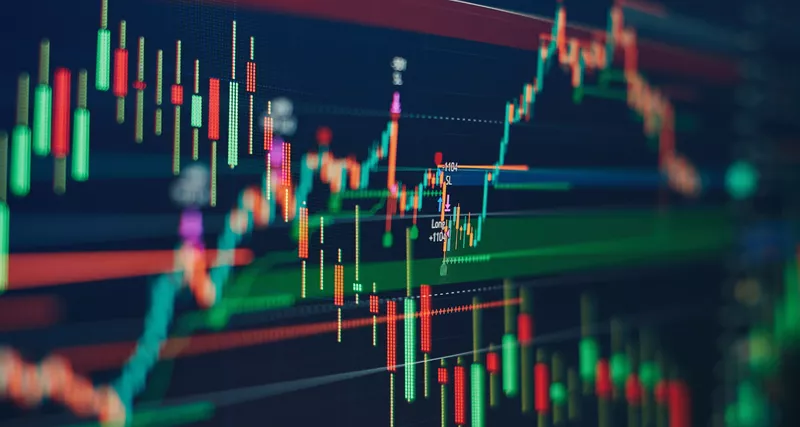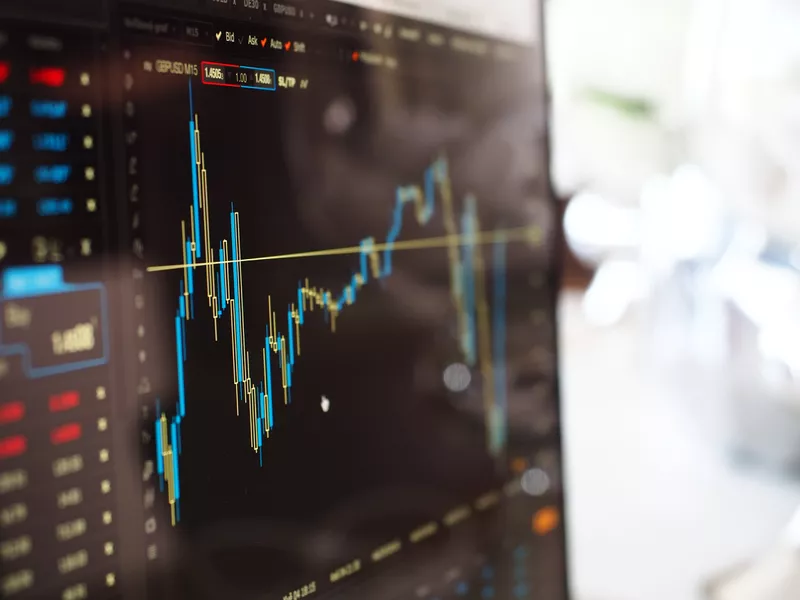As you undoubtedly know, Silicon Valley Bank (SVB)—a major lender to tech startups—collapsed on March 10, 2023. This is the second-largest bank failure in U.S. history, behind the 2008 failure of Washington Mutual Bank.
SVB’s downfall triggered a global market sell-off in fears of a banking crisis and collapsing market knock-on effect. So, should traders be worried? Here’s what you need to know.

What We Know About the SVB Collapse
The collapse of Silicon Valley Bank came after the bank failed to raise $2 billion in capital to shore up its financial position. While the bank did suffer losses amid the tech sector slowdown and rising interest rates, the closure was also a classic case of mismatched deposits and assets. SVB faced a bank run as clients withdrew their deposits amid rumors of its insolvency.
Silicon Valley Bank is now under the control of the Federal Deposit Insurance Corporation (FDIC), the U.S. government entity that insures bank deposits. The FDIC currently guarantees all Silicon Valley Bank client deposits—even those above the standard $250,000. It also announced the sell-off of SVB’s assets to other banks.
Immediately after SVB’s collapse became public, customers of New York’s Signature Bank withdrew more than $10 billion in deposits, in fear of a knock-on effect. Regulators quickly intervened, and the FDIC took control of this second bank to protect depositors and ensure the stability of the U.S. financial system.
Despite global fears of a broader banking crisis, the FDIC’s prompt intervention contributed to a sense of stability, preventing a further domino effect. However, the saga has raised concerns about the health and regulation of the tech sector. Experts are now urging entrepreneurs and investors to diversify their financial service portfolio.
Other Banks to Have on Your Radar
When considering the effects this may have on other banks, it’s important to see the full scope of what led to SVB’s demise. Some question whether the Silicon Valley Bank collapse could have been prevented with better risk management, improved transparency, and more regulatory oversight.
The bank was known as the go-to lender for tech startups. It was also known for taking higher risks and putting its faith in startups when no one else would. What’s more, SVB invested in long-term government bonds, which decreased in value when interest rates increased. The bank had to sell these bonds to meet withdrawal demand, sparking customer panic and prompting the bank run.
Are more bank failures on the horizon? The following three financial institutions with high tech and venture capital concentrations experienced some backlash as a spillover of recent events. However, experts believe these sell-offs were overdone. With more liquidity, capital, diversification, and broader business models, large banks are better equipped to manage risk. They also have more regulatory oversight, making them unlikely to suffer a similar outcome.
Pacific Western Bancorp
Although Pacific Western (PacWest) Bancorp saw its stock price drop more than 75% in the five days after SVB’s collapse, deposits have now stabilized. The bank confirmed in a statement that it continues to benefit from diverse stabilized deposit balances and solid liquidity. The statement concluded that as of March 20, 2023, PacWest has more than $11.4 billion in cash available. This amount exceeds the total uninsured deposits of $9.5 billion.
First Republic Bank
Despite venture capital and private equity deposits forming just 8% of First Republic Bank’s (FRC) total customer base (compared to 52% for Silicon Valley Bank), it also lost the majority of its market value following the collapse of SVB. S&P Global Ratings said the $30 billion rescue package FRC received should ease near-term liquidity pressures. However, it may not solve all its current challenges.
Western Alliance Bancorporation
Because of its exposure to similar customers, Western Alliance Bancorporation initially lost a significant percentage of its market value. It has since regained some stability.
Western Alliance Bank, the primary subsidiary of Western Alliance Bancorporation, issued a statement confirming its financial strength. As of March 16, 2023, it remains in a strong position, with more than $20 billion in immediately available liquidity. Deposit balance fluctuations and inflows have also normalized.
The bank’s insured deposits total more than 55%. This is close to the general healthy rate for large banks, compared to SVB and Signature Bank’s extremely high uninsured deposit rates of 94% and 90%, respectively.

After the SVB Collapse, What Now? Key Takeaways
A crisis often sparks governing bodies to reinforce structural change. After 2008, regulators required the banking sector to lend more conservatively and hold increased capital to act as buffers. Banks also learned to invest more in floating-rate bonds to deal with rising interest rates.
So, what implications does the Silicon Valley Bank collapse have for the affected industries?
For the business sector, the collapse will likely lead to an increased cost of debt and reduced access to capital for tech startups. While not everyone is in favor, policymakers are calling for stricter regulations with a deep analysis of the regulatory framework.
Financial institutions and traders can view the effect on cryptocurrency as both a knock and an opportunity. Silicon Valley Bank had many venture capitalists and crypto startups as clients, and Signature Bank was one of the primary financial institutions serving crypto companies. With the closure of these crypto-friendly banks, startups, and other companies might struggle to get lending services.
Despite crypto liquidity likely taking a short-term dive, it’s also an opportunity for new innovation. This is a time for challenger banks to step up.
In the tech sector, the hardest hit victims are startups with 10–100 staff members who can’t make payroll. Tech companies may also face stricter regulations and government scrutiny.
A Unique simulated Trading Opportunity Awaits
The Silicon Valley Bank collapse triggered a wave of panic selling across global stock markets, especially in the tech sector. While it exposed some vulnerabilities that will remain in the short term, there waits an opportunity for those who can plan long-term.
Experienced traders know how to navigate both rising and falling markets. After all, some of the best market growth often occurs in these periods. So, it presents a unique opportunity for traders to get involved and take advantage of discounted purchases for great returns.
But where do you even start?
The Funded Trader premier platform for forex, commodities, indices, and cryptocurrency trading, is your gateway to earning big as a funded trader. We’re an online demo simulated trading evaluation firm, giving clients the ability to prove their simulated trading skills in a risk-free environment.
After passing an evaluation, eligible traders receive a virtual profit split on the returns generated in their funded account. We believe all retail traders should be able to finance their business through superior performance and effort. In addition to this unique opportunity, we also give affiliates a chance to increase earnings through referral commissions.
Start your success journey with The Funded Trader today.

























